31 May 2017 - {{hitsCtrl.values.hits}}
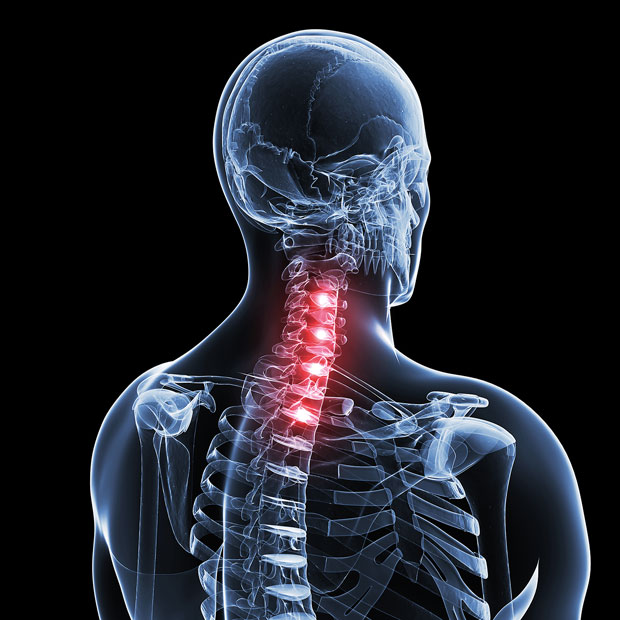
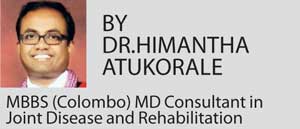 There are seven pieces of bone called cervical vertebrae in the inner core of the neck. They bear the weight of the head and protect the spinal cord that travels within
There are seven pieces of bone called cervical vertebrae in the inner core of the neck. They bear the weight of the head and protect the spinal cord that travels within
Neck pain is so common that two out of three people will experience it at least once in their life. The commonest reason for neck pain is remaining in a certain posture for too long, which sprains the muscles. How you sleep, levels of stress, sudden violent movements (whiplash injury) and spondylosis (worn out neck joints) are some other causes for neck ache.
The structure of our neck
The human neck is a unique structure which can spin more than 180 degrees and bend and tilt in almost any direction. All this mobility comes with an extra price. Imagine a coconut weighing 4kg being balanced on a thin bamboo. This is quite similar to what our neck muscles have to undergo on a daily basis. The muscles balance the heavy skull while also facilitating movements. We should also understand that these muscles are designed to withhold such weights. There are seven pieces of bone called cervical vertebrae in the inner core of the neck. They bear the weight of the head and protect the spinal cord that travels within. In between these bones are nerve roots which spring out and supply various regions of the head and neck. Some nerves travel all the way from the neck to the arms and fingers. This is why problems in the neck region are sometimes felt over the shoulders or the arms.
Two vital blood vessels called vertebral arteries travel through the neck bones. These blood vessels supply the brain. Therefore, certain conditions or movements of the neck can affect the brain, by alterations in the blood supply.
How do you feel neck problems?
Pain is the commonest symptom. Pain is felt over the muscles of the neck most of the time. Thus patients complain of aches on the sides or back of the neck. There is no particular time for the onset of pain. It could be after waking up, as most patients’ experience.
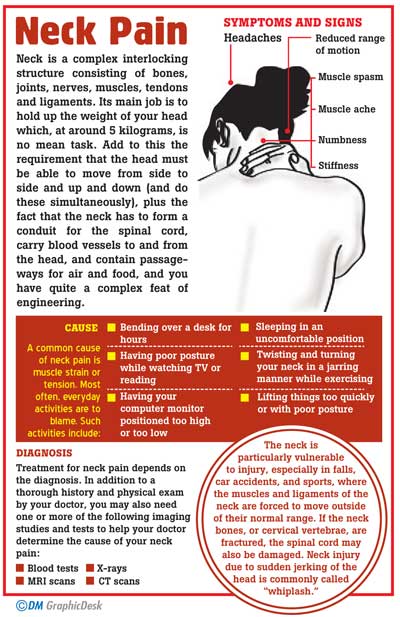
Sometimes stiffness is the dominant symptom. You might feel as if your neck does not move as it used to. There is also difficulty in moving the head, where you have to exert some extra force, especially when performing spinning movements.
Numbness is another complaint. The area over and behind the ears might go numb. A tingling sensation might be felt over the shoulders or arms. A clicking / grating sensation called crepitus may be felt with neck movements. This is caused when the joints in the neck rub against each other. This is not always a harmful thing although felt or heard loudly.
Sometimes patients may feel dizzy when they turn their head awkwardly. Common examples are when trying to glance behind while reversing the car and tilting the head up for shaving. This happens when the vertebral arteries inside the neck bones get squeezed unnecessarily. Dizziness with head movements does not always mean problems with blood vessels. It could also be a result of ear problems. Neck pains can lead to severe muscle spasms, where the muscles surrounding the neck prevent it from moving and are painful to touch.
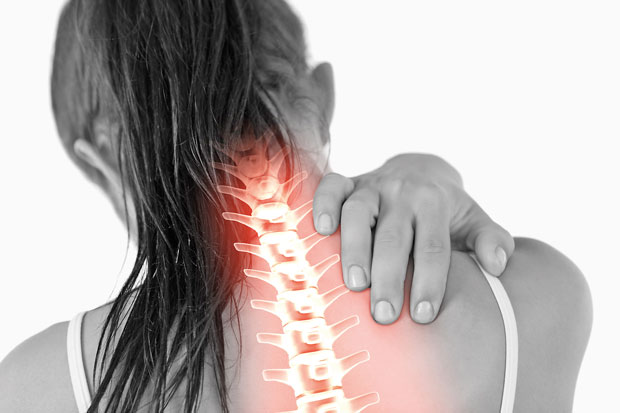
If your pain lasts for more than a few days with numbness, visit a doctor. He will collect information on the neck pain. This includes the duration, severity and stiffness. He will then carry out a detailed examination of your neck, which includes checking the “range of motion”. He will also check for tender areas (which trigger pain) over the muscles and spine. Sometimes, the examination might include shoulder movements as well. The Joint Specialist might order X rays or even a specialized scan of your neck depending on the circumstances. X rays are good at detecting bone changes. MRI scans are better at detecting muscles, ligaments, discs and nerves. There are a variety of ways to treat neck pain. Analgesics (painkillers) are just one of many options available. Muscle relaxants at night help ease tension-related pain. Neuropathic medication which alter how the nerves sense are helpful in treating numbness and tingling. You might also be instructed to do specific exercises by the doctor.
The specialist might advice you to receive physiotherapy. Static and dynamic neck muscle strengthening, heat therapy and sound wave technology are some of the ways in which physiotherapy helps.
There is very little known about the advantages of neck collars, so I advise you against using one just because you were asked to. Being aware of and altering the way you sit, stand, carry a heavy bag with a strap or lift objects is useful in preventing further episodes of pain.
Transcutaneous electric nerve stimulation, also called TENS therapy, is where the nerves of the neck are stimulated to ease pain. Muscle relaxation therapy also helps. If you feel that stress is causing muscle tension, meditation and listening to soothing music might be useful. The new concept of joint protection strategies are taught to all our patients, as prevention is always better than cure.
The accepted cause of neck pain is a simple sprain of neck muscles. This does not last for more than a few days and gets better with simple painkillers (analgesics). Wrong positioning of the neck during sleeping, pillows that are too thick or too thin, maintaining the same posture for hours, carrying items on top of your head or shoulders and sports injuries are the causes of muscle sprain.
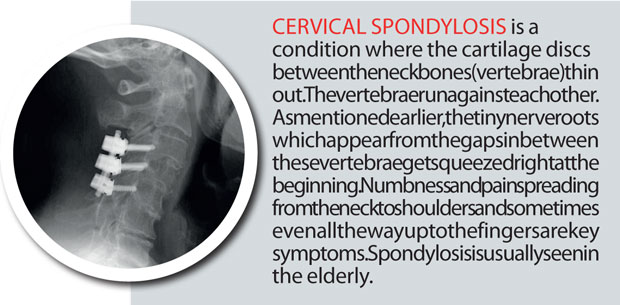
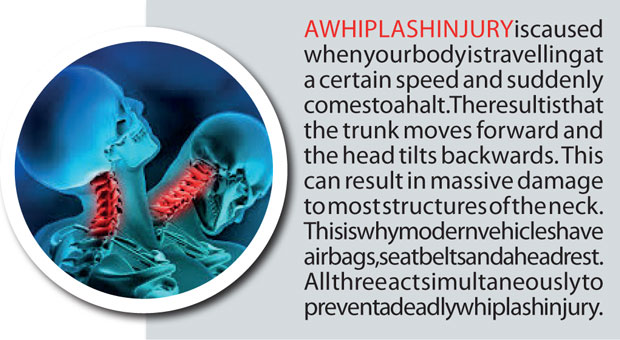
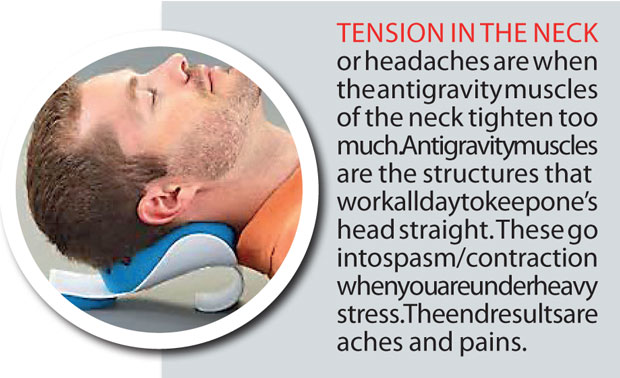
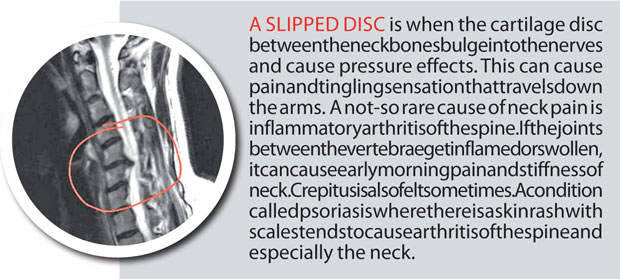
Your feedback is very important to us. We can help you resolve your health concerns and problems. Tell us how we can improve with ideas, suggestions and comments. Your queries on the stories we have found for you are also welcome. Write to us at [email protected]. Let us help you achieve your health and fitness goals with ‘Health Capsule.’
23 Dec 2024 9 hours ago
23 Dec 2024 23 Dec 2024
23 Dec 2024 23 Dec 2024
23 Dec 2024 23 Dec 2024